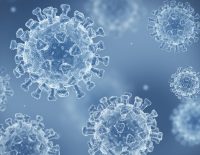How Air Pollution may exacerbate Covid-19 risk, know from Experts

The ongoing Covid pandemic have an airborne transmission and the particulate matter (PM) in the air could act as a carrier to increase the spread of the Covid virus like others.
Dr Abhishek Shankar, Associate Professor, AIIMS Patna, said that air pollution is one of the greatest challenges and there have been discussions at global level for strategic solutions to this concern. This has become more important at present in view of positive correlation between air pollution and the spread of the coronavirus, he added.
“These can be well understood with two hypotheses. First, COVID-19, like other viruses, have an airborne transmission, and particulate matter (PM) could act as a carrier to increase the spread of the virus. Secondly, PM could induce damage to lung cells, increase inflammation leading to increase in mortality and this effect can be more pronounced in most polluted areas”, said Dr Shankar.
Air pollution also weakens the immune system, compromising ability to fight off infection. Long-term exposure to chronically high PM2.5 levels weakens the ability of the lungs to clear off infections due to compromise in immunity, making general population more prone to acquire COVID-19, said AIIMS Doctor.
Prof Harish Salve, Additional Professor, community medicine at AIIMS Delhi, told IANS that the rising air pollution whether it is due to stubble burning or crackers, it may have adverse impact on compromised lungs. As sever Covid patients have the compromised lungs so they must avoid going outside in the morning hour as air pollution has more impacts during the time. Air pollution is most important contributor and risk factors for non communicable disease like lungs problem, heart failure, brain stroke and many others. Over 85 per cent deaths in India are linked with non communicable disease, said Dr Salve.
“The firecracker’s injuries most commonly affect eyes, hands, face, head and fingers. Most commonly it results in burn injuries but can also leads to laceration & tissue damage. The injuries most commonly associated with sparkles, aerial crackers and fountains”, said Dr( Prof) Tarun kumar, RML Hospital.
Talking about the additive effects of crackers on pollution, Dr Tarun said that many harmful gases like sulphurdioxide, nitrous oxides are released when crackers are bursted which can exacerbate the respiratory diseases like asthma and bronchitis. Specially the personnel with residual lung disease after recovering from Covid-19 may face some some breathing issues if Air quality indices (AQI) and PM 2.5 level worsen further.








Comments